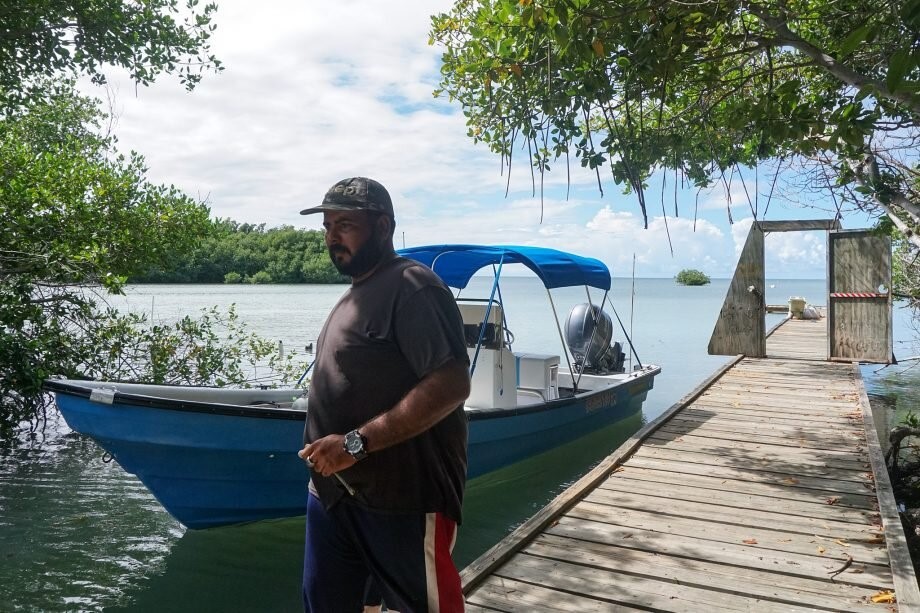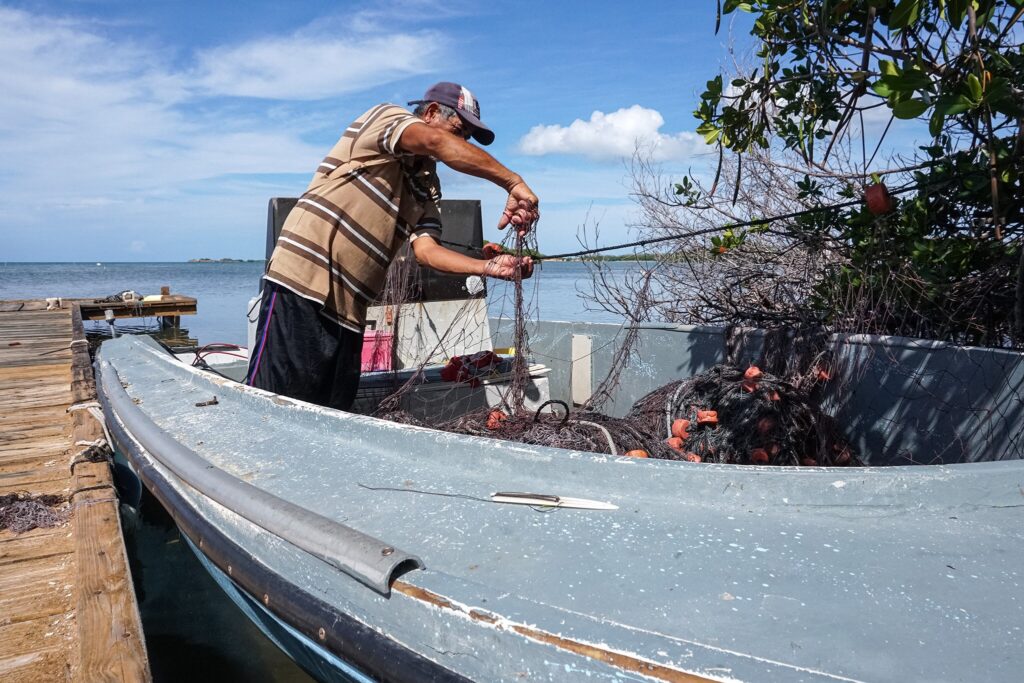CABO ROJO, Puerto Rico — Abdiel Vélez stands with perfect balance as his boat dips and sways with the sea.
Such scenes are disappearing along with local fishermen like Vélez, who fear the erosion of a craft passed down for generations.
As a changing climate increases ocean surface temperatures around Puerto Rico, a declining fish population threatens fishermen’s income. Weather shifts, including more storms, are killing off fish and forcing local fishermen to abandon their traditional techniques.
“There aren’t any young fishers now,” says Vélez. “There are very few of us.”
Local fishermen use traditional methods, such as the mallorquín – three panels of netting tied to a line of buoys – or the nasa, a cylindrical chicken-wire or wooden trap with a funnel submerged in the water. But lower fish counts mean fishermen must venture into deeper waters or innovate techniques to catch the species coveted at seafood shops.

Puerto Rican fishermen brought in 1.75 million pounds of fish in 2017, about a quarter less than two years earlier, according to a 2018 report by Puerto Rico’s Department of Natural and Environmental Resources.
Commercial fishing activity in mid-2018 was estimated to hover at 66% of the levels before Hurricane Maria, a devastating storm that pummeled Puerto Rico and the U.S. Virgin Islands in September 2017.
One of the worst natural disasters to hit the region, it directly and indirectly killed almost 3,000 people in Puerto Rico alone. The storm destroyed the power grid, ruined communication networks and triggered over 40,000 landslides.
The National Oceanic and Atmospheric Administration predicts the number of powerful hurricanes, rainfall rates and storm-surge heights will increase – and they’ll threaten not just a way of life but the environment itself.
Fishermen saw this firsthand after Hurricane Maria, Vélez and other fishermen say, because the bottom of the sea was “turned upside down” and marine plants were covered in sand. Many species died.
Coral reefs, the prime hunting ground for local fishermen, are especially susceptible. Rising ocean temperatures affect the reefs, said René Esteves Amador, marine extension director of the University of Puerto Rico’s Sea Grant College Program, and then bleaching occurs. The increased temperatures stress the coral and cause it to expel a microscopic algae called zooxanthellae. This causes the coral to turn white and makes it more vulnerable.
Surface temperatures in the ocean surrounding Puerto Rico have increased by just over one degree Fahrenheit since 2000, according to the National Oceanic and Atmospheric Administration (NOAA). This reflects a global trend.
Local fishermen also are limited to the waters administered by the Puerto Rico Department of Natural and Environmental Resources, which extend about 10 miles from the low-tide mark. Anything beyond this area is controlled by the United States government.

These boundaries present another problem for the region’s fishers. U.S. commercial fishing fleets hunt the Atlantic for tuna, marlin and swordfish. That means these fish never arrive on the Puerto Rican coast, says Jannette Ramos García, a marine advisor with the University of Puerto Rico’s Sea Grant College Program, which operates with federal funds from NOAA.
“The permits to take fish from [the open ocean] are awarded by the federal government … and none of the individuals who have these permits are from here,” Esteves Amador said.
Vélez earns up to $80 a day. He takes no days off to keep up with rising costs. A few years ago, he says, 25 pounds of string cost $265. Now it costs nearly $100 more.
Some local fishermen have given up and embraced dive fishing. It costs less and involves an easier training process, Ramos García says. Artisanal fishers need specific tools, and people tend to learn the skills when they’re children. Dive fishers go underwater to look for certain types of fish.
For fishing to survive on a small scale, more young people need to see themselves as entrepreneurs, says Daniel Matos Caraballo, biologist and head researcher at the Department of Natural and Environmental Resources’ Fisheries Research Laboratory. Right now, he says, the average age of artisanal fishers is about 48.
Vélez, 36, is young for the profession. He throws his mallorquín carefully from the boat to avoid damaging both the reefs and the net. Making a mallorquín from scratch can take nearly a week. Vélez uses a 600-foot-long net, which can cost between $700 and $800 in materials ordered from the U.S.
He repairs the net himself, weaving it the way his father taught him. The third-generation fisherman recognizes survival of the trade is linked to survival of the environment. Fishermen need to look after Puerto Rico’s natural resources, he says, and strive to preserve fish populations.
— GLOBAL PRESS INSTITUTE (GPI) / Coraly Cruz Mejías
Shannon Kirby, GPJ, translated this story from Spanish.



